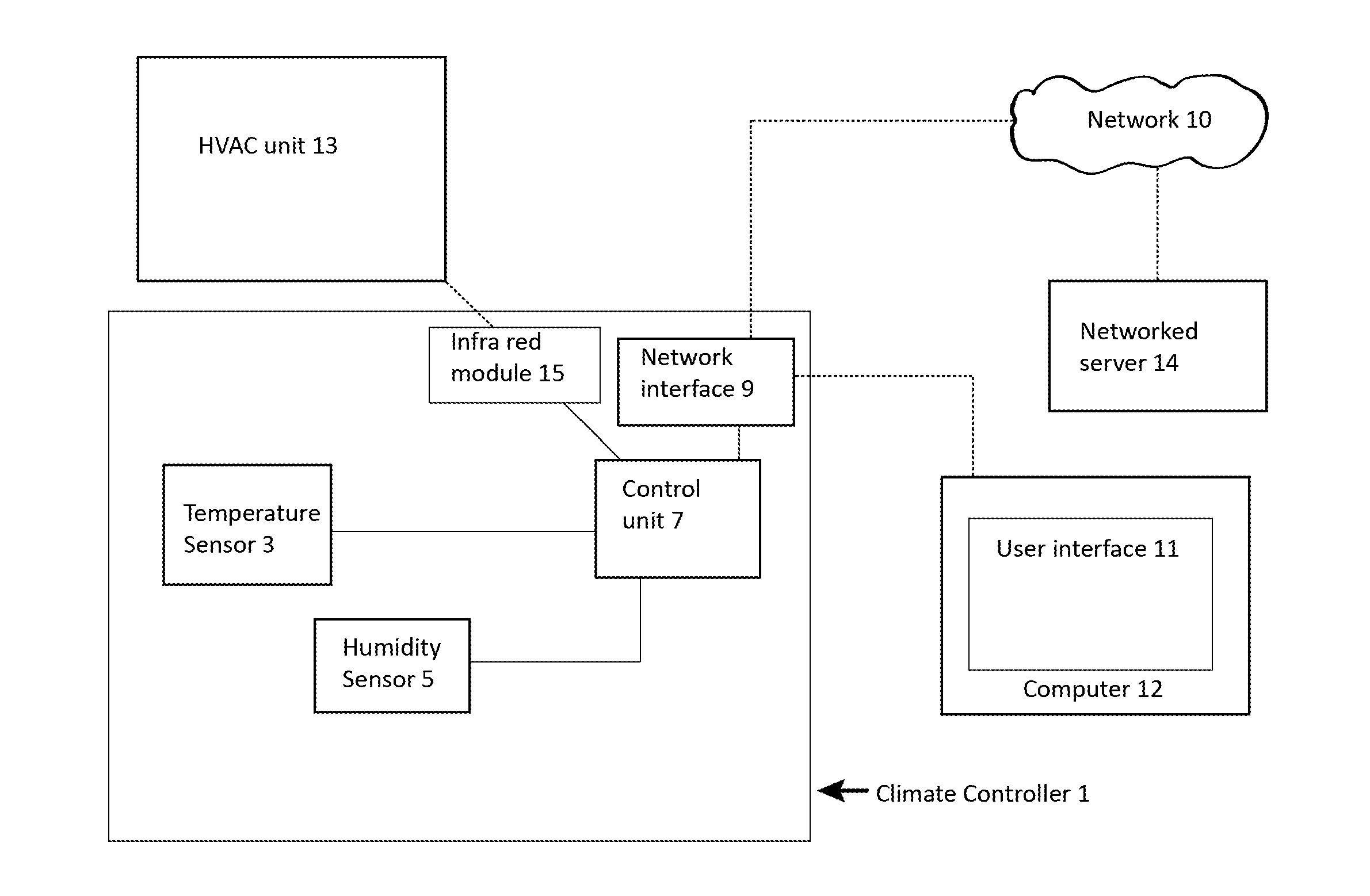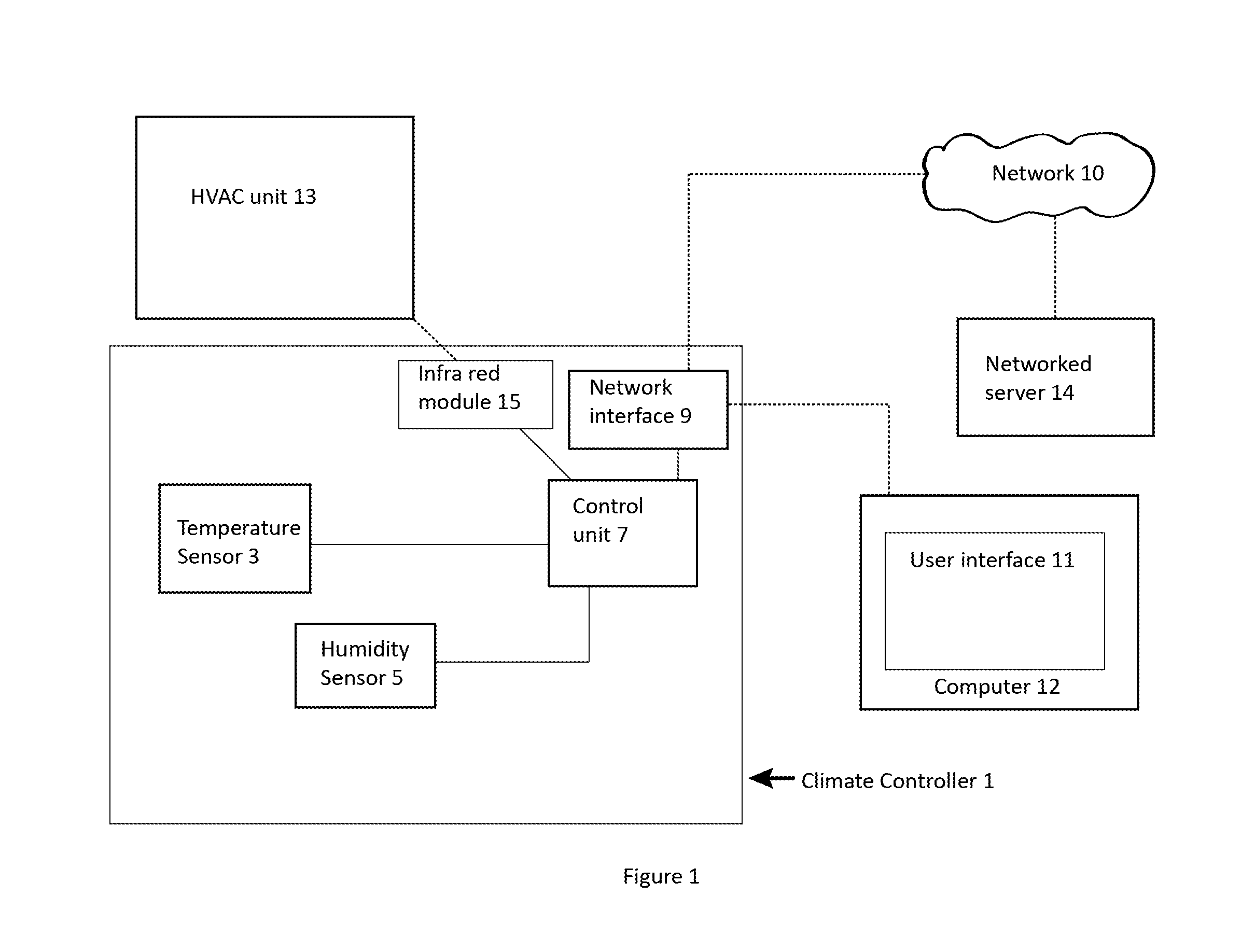Climate controller
a technology for controlling devices and climate control, applied in lighting and heating apparatus, heating types, instruments, etc., can solve problems such as failure to take into account a user's comfort, problems with this basic ‘dumb’ functionality, and inability to take advantage of modern technology such as machine learning and user experience design
- Summary
- Abstract
- Description
- Claims
- Application Information
AI Technical Summary
Benefits of technology
Problems solved by technology
Method used
Image
Examples
Embodiment Construction
[0038]Mode for Invention
[0039]Referring to the figures, a climate controller 1 comprises a control unit 7 for controlling one or more functions of an HVAC unit 13 servicing a climate controlled space. A temperature sensor 3 takes temperature measurements and communicates the temperature measurements to the control unit 7. A humidity sensor 5 takes humidity measurements and communicates the humidity measurements to the control unit 7. The control unit 7 controls the one or more functions of the HVAC unit 13 based on the temperature and humidity measurements to achieve a desired temperature and a desired humidity in the climate controlled space. The one or more functions can be selected from the following: temperature setting, fan speed setting, mode, heating / cooling / drying / ventilation mode setting, and on / off setting. However, HVAC units can include other functions and these can also be selected.
[0040]The control unit 7 controls the functions of the HVAC unit by sending signals to th...
PUM
 Login to View More
Login to View More Abstract
Description
Claims
Application Information
 Login to View More
Login to View More - R&D
- Intellectual Property
- Life Sciences
- Materials
- Tech Scout
- Unparalleled Data Quality
- Higher Quality Content
- 60% Fewer Hallucinations
Browse by: Latest US Patents, China's latest patents, Technical Efficacy Thesaurus, Application Domain, Technology Topic, Popular Technical Reports.
© 2025 PatSnap. All rights reserved.Legal|Privacy policy|Modern Slavery Act Transparency Statement|Sitemap|About US| Contact US: help@patsnap.com



